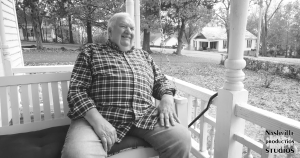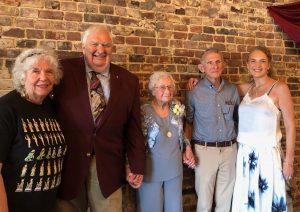ROBERTA NEE ADAMS
Contributor
Producer, director, writer, and historic researcher Heidi Cataldo-Warren has recently completed a fifty five minute documentary about Wartrace, Tennessee. Heidi owns Nashville Production Studios as well as Ground Up Branding. Her business Ground Up Branding works with businesses for marketing and content creation such as websites and commercials. Heidi was contacted to create a website for the city of Wartrace, and the seed of the documentary was planted.
Heidi has lived in Wartrace for a few years, and her family has lived there for almost forty years. She is familiar with the area, and once she began her research for the website, she became intrigued with the town’s people and past. The more she researched, the more her idea for a documentary on the town grew. So, she decided to make it happen.
The history of Wartrace through most of the past one hundred years is mostly told by longtime residents. Irma Troxler, at 102 years old, is the oldest living native of Wartrace, and is prominently featured in the documentary. Though she now resides at an assisted living facility in Tullahoma, she lived most of her years in Wartrace. She recalls stories of the town and its people through her own experiences and those stories handed down by family and past residents. She recalls the WWII years when Camp Forrest was nearby. She spoke of schools, churches, and businesses that have come and gone, as well as prominent residents that shaped the town.
Another longtime resident featured is Don Gallagher. Don has had an interest in town politics for years and has served several terms as mayor of Wartrace. He also speaks of his father, J. W. Gallagher, who founded world renowned Gallagher Guitars in 1965. Don worked alongside his father hand making the highly sought after guitars for years. Like Irma, he speaks of the town’s life through past years up to the present. Don started the Pickers and Fiddlers Convention, a popular music festival for many years in Wartrace. It is now the Gallagher Music Fest, held yearly in Murfreesboro. He tells stories of Colia Streeter, a black man who was an accomplished musician, playing for town square dances.
Another featured resident is Blossom Merryman, a restoration and preservation specialist. She now occupies the oldest house in Wartrace. Speaking of occupation, her house was occupied by Union soldiers during the Civil War for use as a post. She is a wealth of information on the history of many of the buildings in Wartrace, knowing who owned them and what businesses were conducted there.
Finally, there is Andy Gore. He tells of growing up in the Gore Brothers garage, where the town’s menfolk often gathered around the garage’s potbellied stove and told stories of their lives and the goings-on around town. Andy took an interest in mechanics while growing up around the garage, which later led him to a career in aerospace. He also speaks of the churches and the society of the town.
Interwoven with the interviews, Heidi narrates the long history of Wartrace from its beginnings. Its earliest settlers lived peacefully and cooperatively with the area’s Cherokee Indians. The town had several name changes, from War Trace to Wartraceville, to finally Wartrace. She tells of the three main churches in town, and how the congregations would attend each other’s services. The churches would be careful not to plan events to conflict with another church’s events, so the congregants could attend all events.
Wartrace did not escape the Civil War, as there was a skirmish there. There is a plaque in the town hall commemorating that event.
The importance of the railroad in Wartrace played a central part of the town’s history, hence the Union interest during the Civil War. It played a large part in business and industry in Wartrace. Wartrace is considered the “Cradle of the Tennessee Walking Horse,” and the world famous Walking Horse Celebration was started in Wartrace in 1906. The Celebration moved to Shelbyville in 1939. The Walking Horse Hotel was a central figure in the town’s history. During the Depression, Wartrace was thriving.. Wartrace can claim residents who went on to become known in arts and music. These are all pieces, parts, and people that make up the town’s character.
The visual composition of the documentary is a combination of interviews, drone shots by Michael Warren, and live footage. The documentary is intershot with old photos, showing Wartrace’s connections with the past. With the exception of the drone shots, the documentary was filmed and recorded entirely on Heidi’s phone. Then Heidi, with her husband Michael Warren, edited and produced the documentary themselves.
Heidi is planning to do a series of documentaries on Wartrace, delving much more into details on various aspects of the town. Some of her planned subjects to cover are schools, churches, land and agriculture, politics and business, war history, newspaper and town life, arts and music, and restoration and preservation. She welcomes anyone with information or ideas to contact her at heidisstudio@gmail.com.
Put together, it is a tapestry, finely woven with love, depicting a small, authentic American town. While the past is gone, the connections are still there, and will be into the future. That message is clear and easily relatable to all, no matter where they live

 .
.

